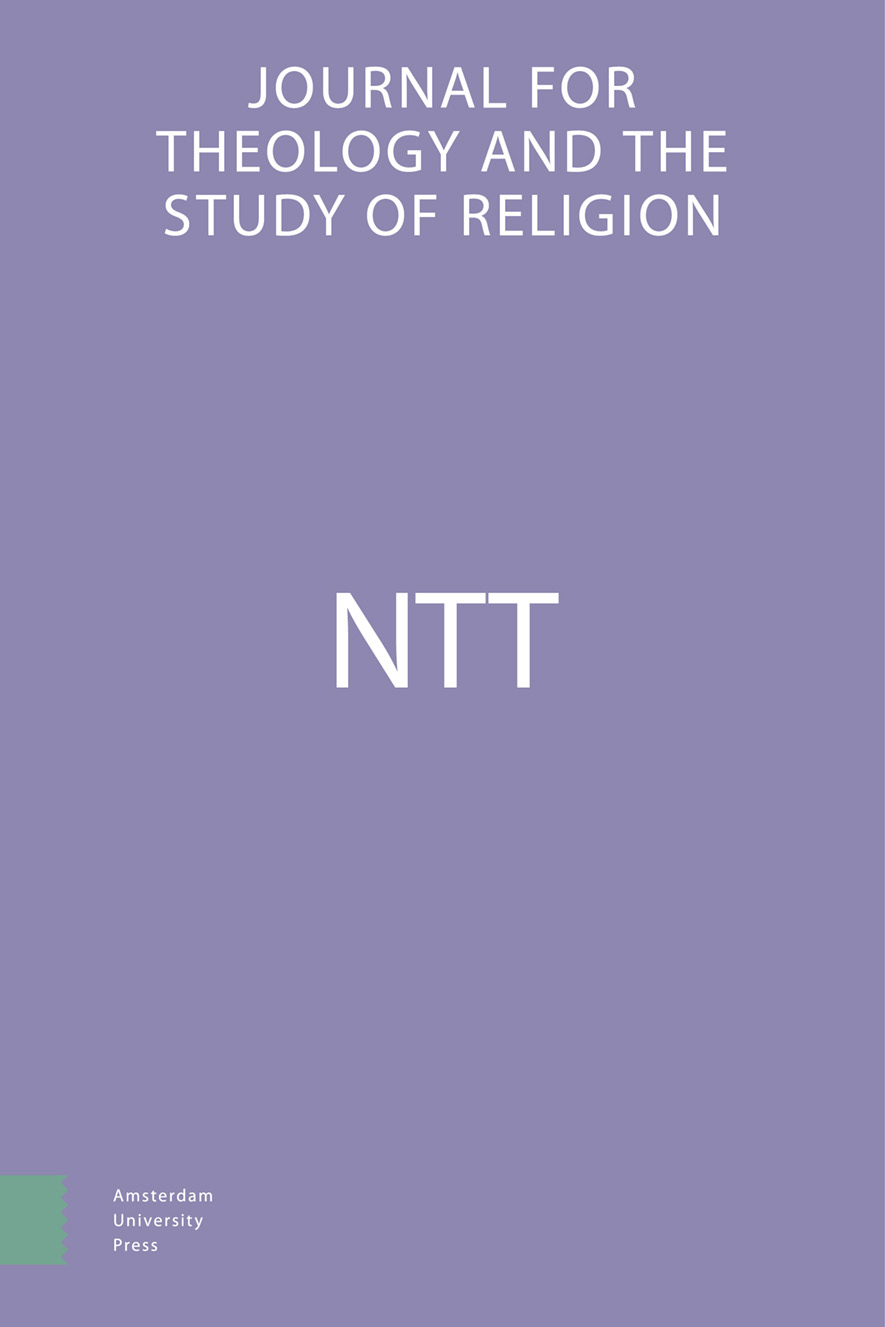- Home
- A-Z Publications
- NTT Journal for Theology and the Study of Religion
- Previous Issues
- Volume 59, Issue 4, 2005
NTT Journal for Theology and the Study of Religion - Volume 59, Issue 4, 2005
Volume 59, Issue 4, 2005
Language:
English
-
-
[Het Boek Jeremia in de NBV: Zwakte en sterkte van een eigenzinnige versio moderna, Jeremiah in NBV: Strength and Weakness of an Obstinate Versio Moderna]
More LessBy Bob BeckingIn October 2004 the Bible Societies of the Low Countries – both Catholic and Reformed – published a new translation into Dutch. This translation aims to be faithful to the sourcetext as well as directed to the syntax and grammar of the receiving language (brontekstgetrouw and doeltaalgericht). In discussing a few examples from the Book of Jeremiah, this contribution investigates whether this strategy was correc Read More
-
-
-
[Herleven de Dode-Zeerollen in De Nieuwe Bijbelvertaling?, Do the Dead Sea Scrolls Revive in the New Dutch Bible Translation?]
More LessThe New Dutch Bible translation refers twenty three times to Dead Sea Scrolls manuscripts. This contribution assesses the influence of the Dead Sea Scrolls biblical texts upon this new translation.
-
-
-
[De NBV: Meer dan een vertaling, The NBV: More than just a Translation]
More LessA comparison of the text of Mark 1:1-15 in NBV with two other standard Protestant and Catholic Dutch translations (NBG and WV95) reveals that the new translation is not entirely new. But in those cases where it differs in a similar way from both NBG and WV95, it interprets the Greek text more explicitly and therefore presents a freer translation. Since the ecclesiastic and social context in the Netherlands and Flanders is se Read More
-
-
-
[De Nieuwe Bijbelvertaling en de schriftlezing: Een kleine praktisch-theologische evaluatie, The New Bible Translation and Scripture Reading: A Brief Practicaltheological Evaluation]
More LessIn this article, the author focuses on the phenomenon of scripture reading in relationship to the new translation of the Bible. How do the listeners in protestant services respond to the new translation? Can we discover a ‘conservative impulse’, a reserved attitude towards new words and expressions or are the listeners relieved that a new translation has replaced the translation of 1951? First, the author discusses the mea Read More
-
-
-
[De Nieuwe Bijbelvertaling en geestelijke zorgverlening: Een kritische evaluatie, The New Bible Translation (NBV) and Spiritual Care: A Critical Evaluation]
More LessBy Johan BouwerThe synod of the Protestant Church in the Netherlands recently released the NBV for ‘testing’ in the parishes for a period of 5 years. Although religious practices can be identified in health care institutions due to the work official spiritual caregivers do, health care was not specifically mentioned as a testing ground for the reception of the NBV. Research indicated that spiritual caregivers working in the fields of general Read More
-
Volumes & issues
-
Volume 79 (2025)
-
Volume 78 (2024)
-
Volume 77 (2023)
-
Volume 76 (2022)
-
Volume 75 (2021)
-
Volume 74 (2020)
-
Volume 73 (2019)
-
Volume 72 (2018)
-
Volume 71 (2017)
-
Volume 70 (2016)
-
Volume 69 (2015)
-
Volume 68 (2014)
-
Volume 67 (2013)
-
Volume 66 (2012)
-
Volume 65 (2011)
-
Volume 64 (2010)
-
Volume 63 (2009)
-
Volume 62 (2008)
-
Volume 61 (2007)
-
Volume 60 (2006)
-
Volume 59 (2005)
-
Volume 58 (2004)
-
Volume 57 (2003)
-
Volume 56 (2002)
-
Volume 55 (2001)
-
Volume 54 (2000)
-
Volume 53 (1999)
-
Volume 52 (1998)
-
Volume 51 (1997)
-
Volume 50 (1996)
-
Volume 49 (1995)
-
Volume 48 (1994)
-
Volume 47 (1993)
-
Volume 46 (1992)
-
Volume 45 (1991)
-
Volume 44 (1990)
-
Volume 43 (1989)
-
Volume 42 (1988)
-
Volume 41 (1987)
-
Volume 40 (1986)
-
Volume 39 (1985)
-
Volume 38 (1984)
-
Volume 37 (1983)
-
Volume 36 (1982)
-
Volume 35 (1981)
-
Volume 34 (1980)
Most Read This Month
Article
content/journals/25426583
Journal
10
5
false
en


